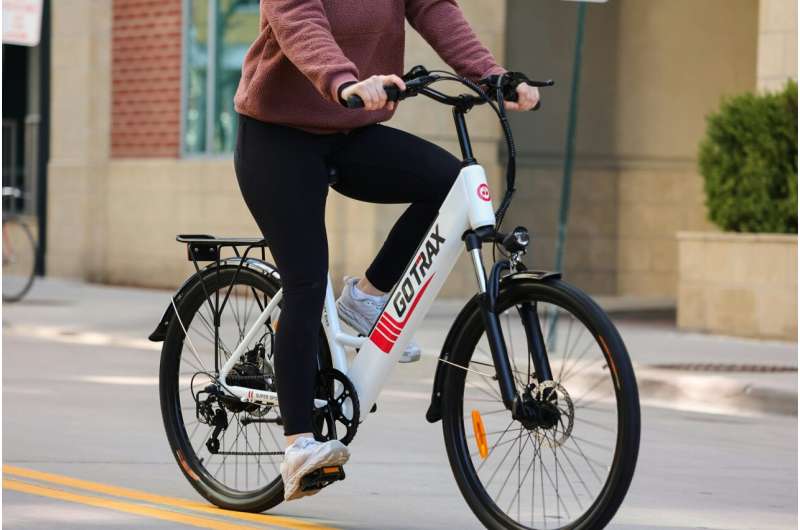
Recently, a pedestrian in Perth tragically lost their life after being hit by an e-scooter.
This incident followed another in Victoria last month, where a person was killed by a modified e-bike, which police claimed could reach speeds of 90 kilometers per hour.
A recent study revealed that nearly 180 young individuals aged 5 to 15 were treated for injuries related to e-bikes and e-scooters at the Sunshine Coast University Hospital during 2023 and 2024, with about one in ten of these injuries being serious.
While e-bikes and e-scooters offer advantages like better city mobility and opportunities to reduce car emissions, the incidents mentioned highlight the dangers they can pose.
To effectively manage these risks, a complete review of the rules governing e-bikes and e-scooters is essential.
The Role of Power
E-bikes are equipped with a motor that runs on batteries to help the rider. Importantly, the word “help” is key here—riders must actively pedal to receive this power boost while riding legally.
E-scooters, on the other hand, are more robust versions of traditional kick scooters and are designed to support adult riders. Their motors do all the work.
Some e-bikes and e-scooters include throttles that allow users to accelerate without pedaling. This feature is technically against the law.
As these modes of transport gain popularity, it’s estimated that around 150,000 e-bikes will be sold in Australia this year alone. Also, in 2024, about 350,000 Australians—roughly 1.3% of the population—are expected to own an e-scooter.
The existing regulations for e-bikes and e-scooters were based on the power needed to ride a standard bicycle.
A rider must produce about 220 watts to ride a regular bike at 32 km/h on flat terrain without wind resistance.
In Europe, the standard power limit for e-bikes is set at 250 watts, while in Canada, it’s 500 watts, and in the U.S., it’s 750 watts.
Australia aligned its e-bike regulations with Europe in 2017.
The rules state that e-bikes can have motors of up to 250 watts, but the rider needs to pedal for assistance, and the motor must shut off at speeds over 25 km/h.
E-bikes can technically go faster than 25 km/h, but the rider must solely supply power at those higher speeds.
Similar power limits have been applied to e-scooters, but because of their design and smaller wheels, regulators have set a more conservative maximum speed of 20 km/h.
However, states in Australia have started to diverge in their regulations, with New South Wales allowing e-bikes of up to 500 watts and Queensland loosening its restrictions on e-scooter motor output, permitting speeds up to 25 km/h.
There are two major issues with the current regulatory framework. First, there’s no barrier to prevent the importation of high-performance e-bikes and e-scooters from other countries. Second, enforcing these rules can be tricky, as police lack the tools to accurately test motor power.
What Needs to Change?
The federal government must play a role in preventing the importation of e-bikes and e-scooters that exceed safety limits in Australia.
However, there is little evidence that the government is addressing this issue, which contradicts its commitments under the National Road Safety Strategy and its approach toward vehicle safety and import regulations that apply to motor vehicles.
State and territory governments should review and simplify their regulations regarding e-bikes and e-scooters.
Tasmania is taking proactive steps with its regulatory review, but e-scooter rules also require updates—to make them clearer and to ensure these devices serve as practical transportation options while allowing for effective enforcement.
A few regulatory tweaks could have a significant impact.
For starters, the current references to motor power should be removed, as crash severity is more about speed than power. Framing regulations around power complicates enforcement, and we don’t use this method for motor vehicle regulations.
Next, regulations should concentrate on where and how fast these vehicles are allowed to be used.
A reasonable initial step would be to follow Queensland and Tasmania in permitting footpath use with a speed limit of 12 km/h or 15 km/h as in those states.
Restricting e-scooters to lower-speed roads (up to 50 km/h), alongside a reduced speed limit on footpaths, would help lower the chances of serious accidents with pedestrians and minimize risky encounters with faster vehicles on high-speed roads.
Implementing a maximum speed of 32 km/h under motor assistance for e-bikes would align us with countries that have urban areas similar to Australia, like Canada and New Zealand.
This would widen our market to more international models and ensure e-bikes can keep pace with traffic on roads, making them a more viable alternative to cars, thereby encouraging less car usage.
As for e-scooters, adopting a 25 km/h speed limit (as in Queensland) and restricting their use to roads under 50 km/h would improve their integration with local traffic.
Local councils and road authorities should be authorized to designate zones where footpath riding is prohibited, such as busy inner-city areas, and set speed limits on shared paths and bike lanes, particularly where pedestrians are present.
With these changes, police would have the means to enforce speed limits for e-bikes and e-scooters using radar technology, similar to what is already happening in Queensland, allowing them to issue fines as needed.
If you would like to see similar Tech posts like this, click here & share this article with your friends!

